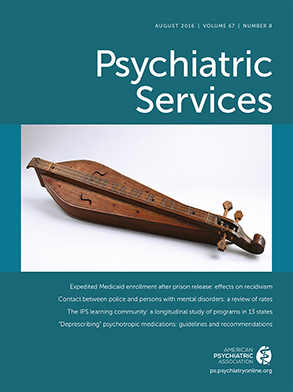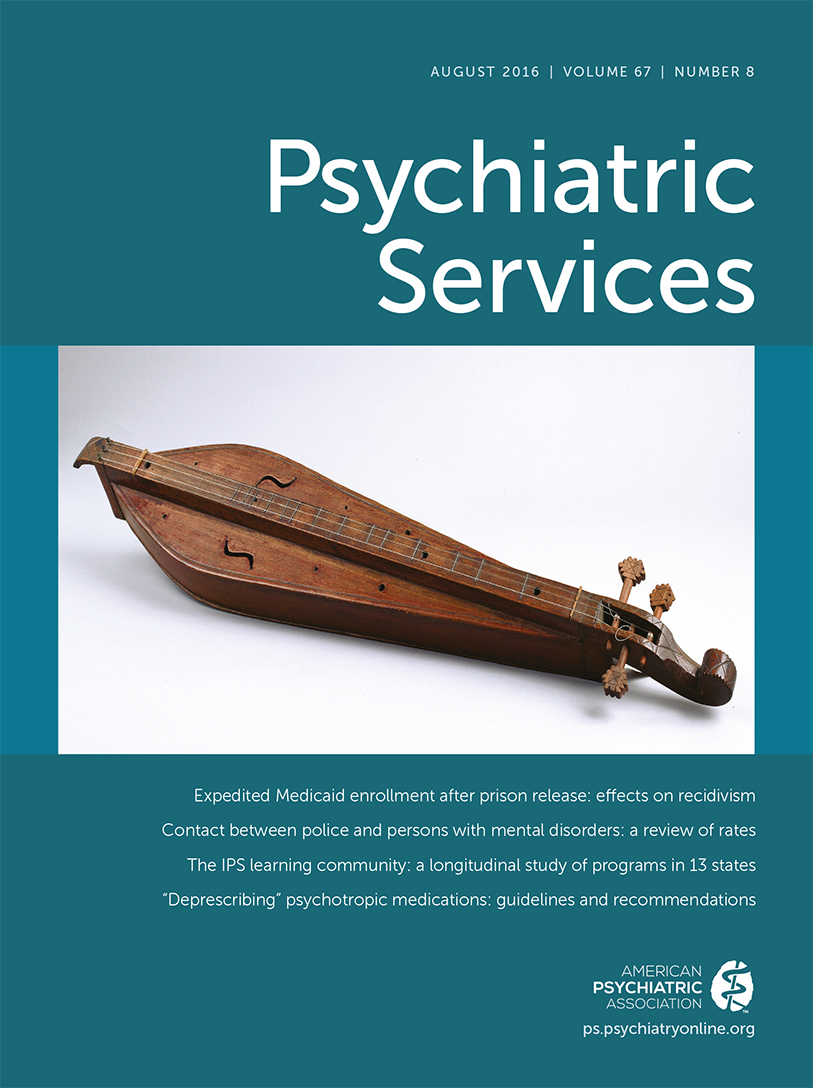It is well known that rates of incarceration of persons with mental illness are disproportionately high across the United States. The two studies in this issue by Morrissey and colleagues, which examined expedited Medicaid enrollment and service use by persons leaving prisons and jails, underscore the issue. What is particularly frustrating about this state of affairs is that neither the issues nor the solutions are new. We have known a lot about how to address these issues for some time. More than 30 years ago, in 1985, the National Coalition for Jail Reform noted that “mentally ill people often end up in jail because there is no other place for them in our communities. . . . For society, jail becomes the place of last resort when there is no other place provided for mentally ill people.” So what new knowledge about the misuse of U.S. jails can we take away from these two important articles in this month’s issue?
I suggest that a key message is that a long-posited explanation for the overrepresentation of persons with mental illness in the justice system is wrong. According to that incorrect explanation, the core problem is that people are treatment resistant and that their criminal activity would decrease if only we could engage them in appropriate behavioral health services. This logic has fueled the explosive development of mental health courts, for example.
The data from the studies by Morrissey and colleagues show that enrollment in usual mental health services is not generally associated with reduced criminal justice involvement. For some individuals it may be, but not for most. We do not yet know for whom and under what circumstances mental health services make a difference in terms of public safety goals. We do know that whether or not mental illness is present, Andrews and Bonta’s “Big Four” criminogenic risk factors (history of antisocial behavior, antisocial personality pattern, antisocial cognition, and antisocial associates) plus substance abuse from the “Moderate Four” risk factors (substance abuse, family marital circumstances, school work, and leisure and recreational activities) have the strongest associations with criminal activity. If we wish to reduce criminal activity, we need to directly treat the Big Four with cognitive-behavioral therapies while increasing substance abuse treatment. Current thinking about the Affordable Care Act (ACA) and justice-involved persons with mental illness should focus on both evidence-based treatments for co-occurring substance-related disorders and on interventions targeting criminogenic risk factors.
Three “Es” contribute to the importance of the ACA: eligibility, enrollment, and essential health benefits. There has been much discussion of the expanded eligibility for insurance coverage of persons under ACA—that is the first “E,” which is law. The second “E,” which the two articles this month highlight, is enrollment in an insurance plan. Obviously, eligibility without enrollment is meaningless. Furthermore, I propose that ultimately these elements mean little if the third “E,” essential health benefits, are not comprehensive.
If cognitive-behavioral therapies targeting criminogenic risk factors—integrated treatment for co-occurring disorders and case management in-reach services, for example—are not part of the essential health benefits, public safety goals, along with public health goals, will not be achieved. If essential health benefits include only some evidence-based practices targeting symptom reduction and improved functioning, then we will fall short of meeting the public safety goals that must be part of the treatment goals for justice-involved persons. ACA is law. Enrollment options are being developed in many jails and prisons. As yet, negligible attention has been paid to essential health benefits for our justice-involved citizens with behavioral health disorders. The two articles in this month’s issue show why we must pay attention.

